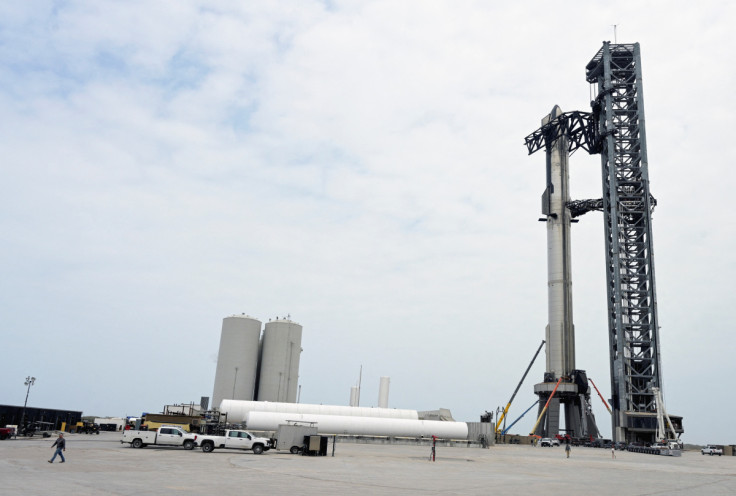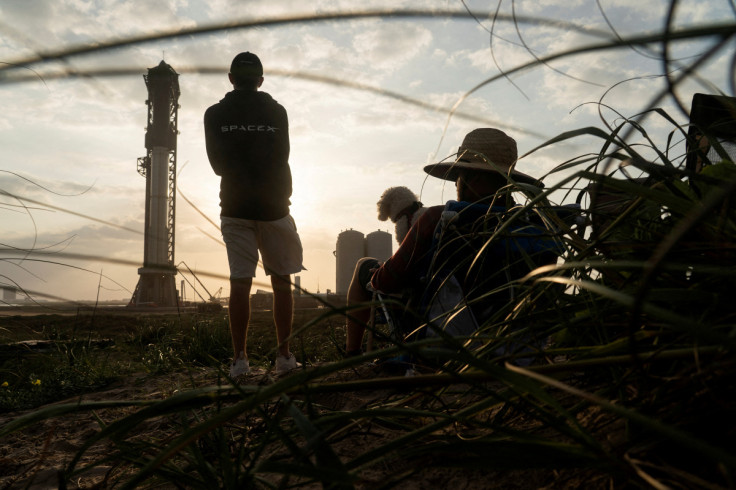Elon Musk's SpaceX Set To Launch First Test Flight Of Starship Rocket System

Elon Musk's SpaceX aimed on Thursday to launch the company's next-generation Starship spacecraft atop its powerful Super Heavy rocket for the first time, on a highly anticipated but brief uncrewed test flight from the Gulf Coast of Texas.
Final preparations were under way at the company's Starbase launch site east of Brownsville, Texas, for a liftoff three days after an earlier launch attempt was scrubbed near the end of the countdown due to a frozen pressurization valve.
Barring further show-stoppers on Thursday, the two-stage rocketship, standing taller than the Statue of Liberty at 394 feet (120 m) high, was due to blast off between 9:30 and 10:30 a.m. EDT (1330 to 1430 GMT) on a planned 90-minute debut flight into space, just shy of Earth orbit.
Getting the newly combined Starship and booster rocket off the ground for the first time would represent a key milestone in SpaceX's ambition of sending humans back to the moon and ultimately on to Mars - playing a pivotal role in NASA's newly inaugurated human spaceflight program, Artemis.
A successful flight would instantly rank the Starship system as the most powerful launch vehicle on Earth.
Both the lower-stage Super Heavy booster and the upper-stage Starship vessel it would carry to space are designed as reusable components, capable of flying back to Earth for soft landings - a maneuver that has become routine in dozens of missions for SpaceX's smaller orbital-class Falcon 9 rocket.
But neither stage would be recovered from Thursday's launch. Instead, both parts will end their introductory flight to space with crash landings at sea. The lower stage will fall into the Gulf of Mexico after separating from the upper stage, which will come down in the Pacific Ocean after achieving nearly one full Earth orbit.
Prototypes of the Starship cruise vessel have made five sub-space test flights to altitudes of 6 miles (10 km) in recent years, but the booster rocket has never left the ground.
In February, SpaceX conducted a test-firing of the Super Heavy, igniting 31 of its 33 engines for roughly 10 seconds with the rocket bolted in place vertically atop a platform.
The Federal Aviation Administration last Friday granted a license for the first test flight of the fully stacked rocket system, clearing a final regulatory hurdle for the long-awaited launch.
The SpaceX announcement this week on Twitter that it planned a second launch attempt on Thursday, April 20, after the first was scrubbed, amused many of Musk's fans and detractors alike.
The tweet set off a flurry of jokes on the social media platform making reference to 4/20 as a date widely associated with cannabis culture, and to the notoriety Musk gained in 2018 for smoking marijuana on a live web show.
Musk, who purchased Twitter last year for $44 billion, is the founder, CEO and chief engineer of SpaceX. He also is chief executive of electric carmaker Tesla Inc.
If all goes as planned on Thursday, the Starship will ascend on a flight most of the way around the Earth before it re-enters the atmosphere and free-falls into the Pacific at supersonic speed, about 60 miles off the coast of the northern Hawaiian islands.
After separating from the Starship, the Super Heavy booster is expected to execute the beginnings of a controlled return flight before plunging into the Gulf.
As designed, the Starship rocket is nearly two times more powerful than NASA's own Space Launch System (SLS), which made its first uncrewed flight to orbit in November, sending a NASA cruise vessel called Orion on a 10-day voyage around the moon and back.



© Copyright Thomson Reuters 2024. All rights reserved.





















